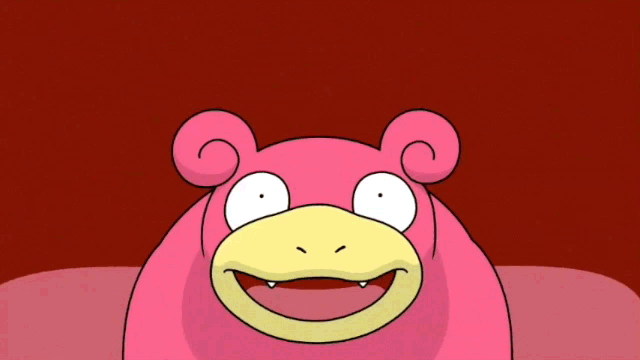Post by Seyla on Apr 13, 2010 0:07:48 GMT -5
Hello all, I am currently writing a guide on the PokeRadar, and I will update this thread accordingly.
Welcome to my guide. Today I will show you how a man prepares and effectively uses the PokeRadar to chain wild shiny Pokemon. Lets begin with some basic Q&A.
Q: What is the PokeRadar?
A: The PokeRadar is a tool in Pokemon Diamond, Pearl, and Platinum which is given to you by
Professor Rowan in Sandgem Town after obtaining the National Dex.
Q: What does it do?
A: The PokeRadar lets you draw out Pokemon in surrounding patches of grass. Everytime you use the PokeRadar, 4 patches of grass around you with shake. Once you use the radar, you must walk 50 steps to recharge it for use again. There are two basic types of shakes, normal and strong. Once you walk over a shake, a wild Pokemon will appear. Strong shakes give you a higher chance of seeing less common Pokemon which normally reside in the route you happen to be on. There are also Pokemon which cannot normally be found on a route, unless you
use the PokeRadar. There is also a third type of grass shake, the shiny shake. We will discuss this further later.
Q: Where can I use the PokeRadar?
A: In any patch of common grass. It does not work in caves or buildings, nor the extra tall grass you will see occasionally. The grassy patches in D/Pt were designed with the PokeRadar in mind, and in almost any route you will find suspiciously large square patches of grass, perfect for the PokeRadar.
Alright, this is how it works. Every time you activate the PokeRadar, a maximum of 4 patches of grass around you will shake. If you see all 4 patches, you will notice that each shaking patch is at a different distance away from you. Here is an ASCII graph to demonstrate.
X 4 4 4 X 4 4 4 X
4 3 3 3 3 3 3 3 4
4 3 2 2 2 2 2 3 4
4 3 2 1 1 1 2 3 4
X 3 2 1 U 1 2 3 X
4 3 2 1 1 1 2 3 4
4 3 2 2 2 2 2 3 4
4 3 3 3 3 3 3 3 4
X 4 4 4 X 4 4 4 X
If you were standing in the middle of this graph and hit the PokeRadar, every shake would fall on this graph. One shake for each number. Every time you activate the radar, you will see one shake at a 1 position, one shake at a 2 position, and so forth. These shakes are completely random, and will change every time you use the radar. The Xs will be discussed later.
Note: There are a few general rules when activating the radar. First, only use it in appropriately large patches of grass. The patch should always be at least the size of the PokeRadar range(as shown above). Sometimes you will not see 4 patches of grass shake, because at least one of the shakes happened outside of the patch of grass. I will demonstrate.
X 4 4 4 X 4 4||||||
4 3 3 3 3 3 3||||||
4 3 2 2 2 2 2||||||
4 3 2 1 1 1 2||||||
X 3 2 1 U 1 2||||||
4 3 2 1 1 1 2||||||
4 3 2 2 2 2 2||||||
4 3 3 3 3 3 3||||||
X 4 4 4 X 4 4||||||
Here you see a modified version of the graph. The vertical lines represent tiles outside the patch of grass, whether they are trees, path or anything else. Now, when you use the radar here, shakes of grass may still fall onto the non-grassy areas. However, you will only see the shakes which still fell inside the patch. A partial patch is acceptable to use, but remember that you need room to navigate around the shaking patches and that the less grass you have available, the less your chances of finding appropriate level 4 shakes.
NOTE: Standing on the very edge of the patch is never a good idea. Remember that you will always have at least one shake directly next to the tile you are standing in, and if you are standing next to a void tile, there is a chance that none of the available grassy tiles will shake. If this happens, a notice will display saying "The grassy field remained quiet." This is a Very Bad Thing, which I will explain in the chaining section of the guide.
Welcome to my guide. Today I will show you how a man prepares and effectively uses the PokeRadar to chain wild shiny Pokemon. Lets begin with some basic Q&A.
Q: What is the PokeRadar?
A: The PokeRadar is a tool in Pokemon Diamond, Pearl, and Platinum which is given to you by
Professor Rowan in Sandgem Town after obtaining the National Dex.
Q: What does it do?
A: The PokeRadar lets you draw out Pokemon in surrounding patches of grass. Everytime you use the PokeRadar, 4 patches of grass around you with shake. Once you use the radar, you must walk 50 steps to recharge it for use again. There are two basic types of shakes, normal and strong. Once you walk over a shake, a wild Pokemon will appear. Strong shakes give you a higher chance of seeing less common Pokemon which normally reside in the route you happen to be on. There are also Pokemon which cannot normally be found on a route, unless you
use the PokeRadar. There is also a third type of grass shake, the shiny shake. We will discuss this further later.
Q: Where can I use the PokeRadar?
A: In any patch of common grass. It does not work in caves or buildings, nor the extra tall grass you will see occasionally. The grassy patches in D/Pt were designed with the PokeRadar in mind, and in almost any route you will find suspiciously large square patches of grass, perfect for the PokeRadar.
Alright, this is how it works. Every time you activate the PokeRadar, a maximum of 4 patches of grass around you will shake. If you see all 4 patches, you will notice that each shaking patch is at a different distance away from you. Here is an ASCII graph to demonstrate.
X 4 4 4 X 4 4 4 X
4 3 3 3 3 3 3 3 4
4 3 2 2 2 2 2 3 4
4 3 2 1 1 1 2 3 4
X 3 2 1 U 1 2 3 X
4 3 2 1 1 1 2 3 4
4 3 2 2 2 2 2 3 4
4 3 3 3 3 3 3 3 4
X 4 4 4 X 4 4 4 X
If you were standing in the middle of this graph and hit the PokeRadar, every shake would fall on this graph. One shake for each number. Every time you activate the radar, you will see one shake at a 1 position, one shake at a 2 position, and so forth. These shakes are completely random, and will change every time you use the radar. The Xs will be discussed later.
Note: There are a few general rules when activating the radar. First, only use it in appropriately large patches of grass. The patch should always be at least the size of the PokeRadar range(as shown above). Sometimes you will not see 4 patches of grass shake, because at least one of the shakes happened outside of the patch of grass. I will demonstrate.
X 4 4 4 X 4 4||||||
4 3 3 3 3 3 3||||||
4 3 2 2 2 2 2||||||
4 3 2 1 1 1 2||||||
X 3 2 1 U 1 2||||||
4 3 2 1 1 1 2||||||
4 3 2 2 2 2 2||||||
4 3 3 3 3 3 3||||||
X 4 4 4 X 4 4||||||
Here you see a modified version of the graph. The vertical lines represent tiles outside the patch of grass, whether they are trees, path or anything else. Now, when you use the radar here, shakes of grass may still fall onto the non-grassy areas. However, you will only see the shakes which still fell inside the patch. A partial patch is acceptable to use, but remember that you need room to navigate around the shaking patches and that the less grass you have available, the less your chances of finding appropriate level 4 shakes.
NOTE: Standing on the very edge of the patch is never a good idea. Remember that you will always have at least one shake directly next to the tile you are standing in, and if you are standing next to a void tile, there is a chance that none of the available grassy tiles will shake. If this happens, a notice will display saying "The grassy field remained quiet." This is a Very Bad Thing, which I will explain in the chaining section of the guide.





